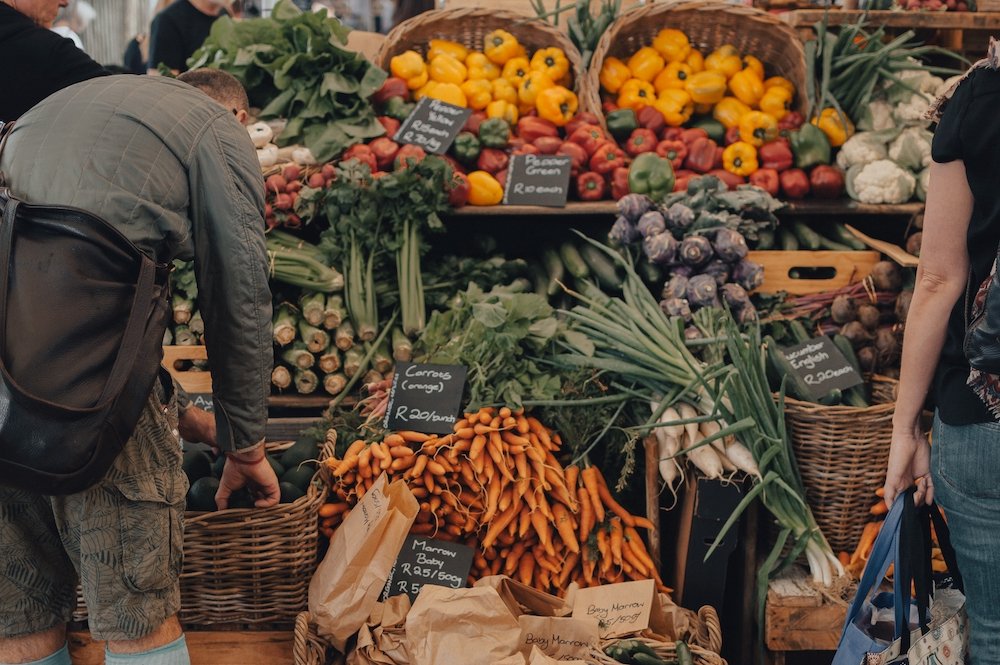A Year to Grown On: Washington Farmers Face Winter, Water & Wild Weather
(© Sam Judy, stock.adobe.com)
A Year to Grown On: Washington Farmers Face Winter, Water & Wild Weather
BY CATIE JOYCE BULAYIt’s the middle of the night. You’re wide awake in your bathroom. The heat is cranked up to 100 degrees. A running hair dryer in one hand, a damp towel in the other. You’re fighting to keep a calf alive, born just hours ago in the snowy fields in sub-zero temperatures, and your husband and employees are still out searching for other calves to bring in.
This was life for Debbie and Mark Wieseler of Flying W Farms, north of Ritzville last winter. “As soon as we found [the calves] we grabbed them and got them warm,” says Mark. Some of the calves’ body temperatures needed to be raised nearly 20 degrees.
With 30 years of ranching under their belts, the Wieselers aren’t always tending calves in their bathroom. During a typical winter they have a straw-filled cattle trailer in the field and a hospital barn set up to handle bad weather, but this year called for improvisation. “It was overwhelming,” says Mark, who added they keep pushing the date they begin calving later and later each year.
“In our area we don’t usually have to worry about winter after February 10, but this year winter didn’t even start until the ninth,” says Mark, who raises around 350 pairs of cows and calves and grows alfalfa and wheat. “It was the worst I’ve ever seen in our area – sub-zero temperatures, high winds, driving snow. We basically ran 24/7 for five weeks through three storms.”
“It was just crazy, a lot of tired people,” says Debbie. “When you’re done, you’re like ‘whew,’ come up for air. It made me feel like we are stronger than we think we are.”
Water, Water Everywhere
Winter was a strange one for the Inland Northwest this year. The holidays and January brought mild, spring-like temperatures, then wham – winter with a capital W finally hit in early February, wreaking havoc on roads and schedules, inconveniencing most. But for those whose livelihoods depend on Mother Nature, it often costs much more. Many farmers saw increased workloads and decreased bottom lines. Though as the year unfurled with more wonky weather, some lucked out with surprisingly bountiful harvests.
A couple hours south in the Walla Walla Valley, Hayshaker Farm, a six-acre, horse-powered farm that provides produce to the local farmers market, grocery store and restaurants, didn’t feel any effects beyond a longer winter vacation and more time to work on spring projects. As the harsh late winter gave way to a cool mild summer, crops looked good.
“I believe the high yield and quality this year are mostly due to the weather, with less high temps and no smoke,” says owner Chandler Briggs, who plows behind his two draft horses Jackson and Dusty with partner and co-owner Leila Schneider.
But before the mild summer came unexpected rains, much heavier than usual for our arid region. For Upper Dry Creek Ranch, which raises and breeds straightbred Coopworth ewes and lambs and raises Angus cows in Weston, Ore., the two straight weeks of April rain were more of a challenge than the late snow because they lamb during that time.
“It was brutal,” says owner Cheryl Cosner, who has ranched with her husband for over 35 years. “We have two hoop houses for lambing shelter and those were stuffed to the gills with ewes and newborn lambs. Our losses were nearly non-existent from the weather, but the extra work it created was massive.” She also noted they had to purchase pricey, hard-to-come-by hay in February, an added expense they didn't anticipate because their animals spend most of their time foraging and grazing in Walla Walla Valley fields.
Despite the challenges Cosner loves what she does. “No day is the same – ever,” says Cosner, who grew up around cattle, spending summers moving cows with her dad. “I like the complexity. Many, many moving parts come together to create a whole. In order to do it right, you have to ask yourself lots of questions.”
As the year continued, farmers had to ask themselves even more questions as they struggled with Mother Nature’s mood swings. For Walla Walla Valley’s Frog Hollow Farm, which grows hundreds of unique heirloom vegetables, the big question was where to plant. Due to the saturated ground, that meant switching from a rocky area that proved too much for the rock picker to a cover crop they’d wanted to leave in longer.
This on-their-feet thinking saved crop yields. “The crop that's growing over there is doing fantastic, so we chose well,” says Amy Dietrich, who farms the 20-acre plot of land with her husband Jeff and two children in College Place on their 100-year-old farmstead. What started in 2006 as a backyard garden to teach their children the value of hard work soon grew into a business now known across the region for flavorful tomatoes and unique heirlooms sought out by high-end restaurants.
Finding a Delicate Balance
The Yakima Valley saw similar weather patterns, but for seasoned hops farmer Martin Ramos of Seagal Ranch in Grandview, the late cold snap was a relief. “Back in January it was really warm, the hops were waking up early,” says Ramos, who manages the 470-acre hops farm, which provides 12 varieties of aroma hops to breweries like New Belgium and Lagunitas. “When I went out to the fields and started seeing green I started to worry. That cold spring helped to hold them back.”
By harvest, which was on the early side, things had evened out. “Hops are a strange thing,” says Ramos, who learned to grow them from an early pioneer in the field and has been managing the perennial crop for over 30 years. “They respond more to day length than temperatures.” He wasn’t sure if the cold spring, cool summer or other factors played into the early harvest.
Hops hang on day length; for grapes it’s the ground temperature that stimulates growth. Several other factors go into producing a flavorful wine grape, and the weird weather puzzled even seasoned viticulturists.
“I find grapes to be very fussy and linked to the weather always,” says viticulturist Dick Boushey, who manages several vineyards on Red Mountain along with his own 30 acres in Grandview. His Boushey Vineyards produces some of the state’s most highly acclaimed wines. “I think the late winter had a pretty big effect. It was pretty unexpected, too. It started me not believing the weathermen anymore.”
The cold weather – with five-foot-high snow drifts in some places – prevented Boushey and his crew from getting out into the vineyard to do hand work like pruning and suckering. For seasonal workers that depend on these jobs, bad weather can mean no paycheck. “There’s the social effects of cold weather,” says Boushey. “When people can’t work, they run out of money.”
The late cold also caused a delayed bud break by two weeks, significant because protecting these young grapes is essential to a vineyard’s crop and the entire season of wine production. Then the ground warmed and by bloom time the vines had miraculously gained back those two weeks and were almost ahead of schedule. Added ground moisture stimulates growth and creates bigger grapes, great for the Concord table grapes Boushey also manages, but not wine grapes because all the flavor is in the skin. He noted that increased moisture and humidity also create a better environment for pests and diseases like bunch rot. All of these factors create more work and added costs in management of the vines.
How will that translate to this year’s wine vintage? Boushey was optimistic at the beginning of harvest. “In cooler years we can achieve a nice balance between sugar, acid, and flavors, which can lead to balanced wines that will age and be food friendly.” However, as harvest continued so did the unexpected weather –thunder showers were putting a damper on harvesting and the cold late summer was making it difficult for the fruit to ripen.
Dry land crops like wheat and barley, on the other hand, may have benefitted from the extra moisture. Though planting and harvest were late and the region’s yields were lower – down eight bushels per acre from 2018, according to the USDA – some speculate the moisture may have improved quality.
Grains are just beginning to come into their own in terms of terroir. While no one bats an eye when Boushey says each vintage tastes different to him, it’s only in recent years people have begun to listen to grain farmers and brewers saying the same thing.
Most of the Northwest’s wheat, one of the largest regional crops, goes overseas, but there’s a small pocket of farmers concentrating on flavor and keeping it local. One such farmer is Bill Meyer of Joseph’s Grainery in Colfax. A fifth-generation Palouse farmer, Meyer has been working his way out of the wheat commodities market by providing high-quality whole grains directly to consumers, artisan bakers, brewers and distillers. His Baroness barley, a unique heirloom variety he brought back from near-extinction, goes to Spokane’s Bellwether Brewing and Warrior Liquor, among others.
“Yields definitely aren’t anything to get excited about – average at best,” says Meyer at the beginning of an exceptionally late harvest. “The quality is fantastic though – good falling numbers, proteins and weights are right where we want them,” which he credits in part to this year’s extra moisture.
Wild Cards
Mother Nature was certainly showing her fickle side on McIlrath Farms in Naches Heights, with some of the lowest pear yields, yet best apple crop Scott McIlrath has seen in his 43 years of farming. He made use of the mild winter by getting his pruning done early, which helped keep him on track through March’s January-like temperatures when work came to a halt. Initially, he wasn’t worried about this year’s crop because his trees didn’t come out of dormancy during the warm winter and blossomed as usual in the spring.
“It didn’t look too bad but, doggone it, all the fruit fell off,” says McIlrath, who moved his young family from the West Side to Yakima Valley when he bought a 30-acre farm in 1976 without knowing the difference between an apple and pear tree. He now owns 300 fruit acres and 100 in hay for his cattle. He hypothesized that the cold snap damaged the pear buds at just the right, or rather, wrong time.
Though his pear crop was halved, his apples excelled. “Apples, on the other side, set a huge crop,” he says, calling it a beautiful summer for fruit overall, with sugar levels up and starch levels low. “I’ve never seen such apples.”
McIlrath, who grows organically and sells at a farm stand and to local retailers, will try spraying potassium and phosphorus on the pear trees to strengthen buds, something he’s never done before. “A sort of insurance policy,” says the former insurance salesman.
Insurance policies like his might be a good idea for the coming year, predicted to be another cold one. Boushey, who planted his first grapes in 1980, predicts a future of continued irregular weather due to climate change.
“That’s what I think growers have to be prepared for,” he says. “The weather is not going to be a set thing. It hasn’t been since 2011, so we’re going to have to farm to deal with that.”



































